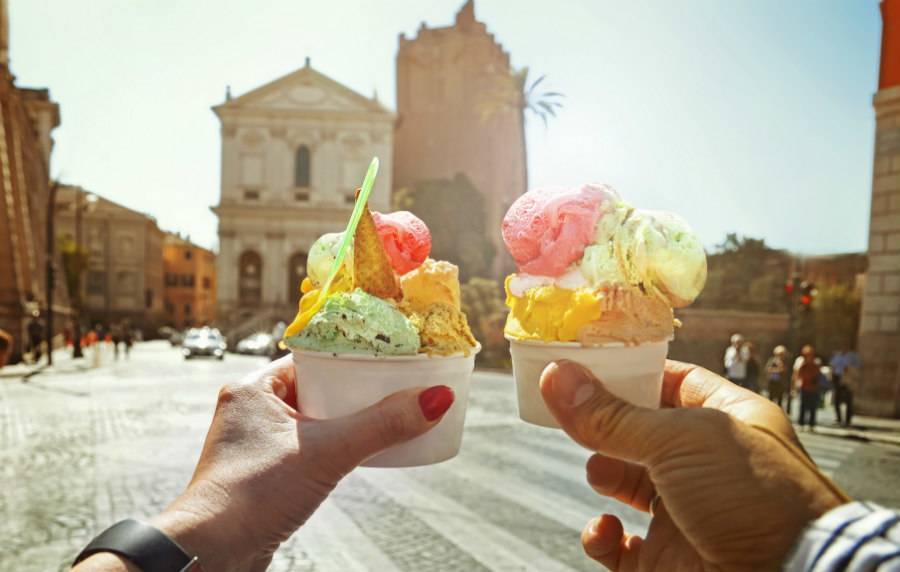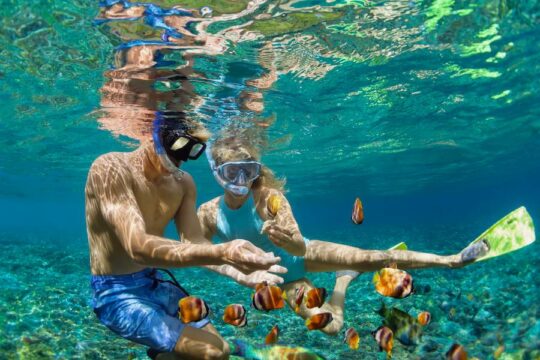Hyper-personalization is a current buzzword in online travel marketing that goes beyond personalized marketing. Instead of relying on guest profiling to make assumptions about a traveler, hyper-personalization captures subtle details about an individual’s trip planning and booking behaviour based on real-time data from multiple channels and touchpoints.
Because travel is an emotional activity, there isn’t a one size fits all experience. From research to reviews, travelers take on a distinct approach. At the same time, they expect something different from a trip — whether that’s relaxation, adventure, or enrichment. So more and more, we see brands deploying this tourism marketing strategy, and you can do the same.
By knowing a traveler’s unique interests and behaviour, it’s possible to anticipate rather than react to their needs — which allows for better targeting with tailored content, offers, and the experience itself. Overall, hyper-personalization could lead to more bookings because you give them what they specifically want every step of the way.
So let’s dig deeper into what hyper-personalization looks like throughout the omnichannel customer journey.
What hyper personalized tours look like
There are many paths a traveler can take to look, book, pay, and participate. Some seek advice from travel influencers, while others trust TripAdvisor reviews. Whereas one prefers to ask questions over the phone, another follows booking steps on a website.
Hyper-personalization is all about identifying a traveler’s specific path. Where they search, what they look for, their device of choice, prime booking window, what they want out of the activity, and more. Then with that information, delivering a matching experience when it matters most.
And according to PhocusWire, travelers now face choice overload — so they often lean towards operators that provide a more personalized experience.
That said, there are four phases in the customer journey where you can use hyper-personalization strategies to influence a traveler’s purchasing decisions and create a better overall guest experience:

1. Inspiration
Whether it’s months before, or while in-destination, a traveler looks up ideas using their go-to resources. From social media to Google Maps, they jot down or save options for things to do. So it’s best to make relevant suggestions where and when they’re browsing — which involves using familiar terminology and relatable images.
2. Booking
A traveler who’s ready to book will do so over the phone, in-person, or online — more specifically, your website, social media, email, or an OTA. An effective way of converting them is to make the next step their preferred method of booking and paying. And no matter the channel, recommending add-ons they’ll be most interested in — the right upsell to enhance the experience.
3. Experience
Just because someone books a bus tour doesn’t mean they want a mainstream bus tour experience. They might like longer stops, more commentary, or gluten-free snacks. While you can’t please every guest, you can still deliver an experience that closely aligns with their expectations by paying attention to the details.
4. Loyalty
If you have a single location, a personalized loyalty program might not work because traveler’s don’t often revisit a destination unless it’s nearby, or they fall in love with a place. But loyalty isn’t just about return business; it’s about referrals, too. By knowing where they read reviews, it’s not much of a stretch to ask them to write one there as well.
How do you find out this information per traveler though? Well, the best indication of future and current behaviour is past behaviour. So you can tap into historical data from a variety of sources — social media, digital analytics, website, transactional — and pool it together for artificial intelligence (AI) and machine learning software to connect the dots.
However, unless you’re a big travel brand with a big budget, this might be infeasible to carry out. And what about the concern over data protection and encroaching on guest privacy? As a smaller tour and activity operator, you can still apply hyper-personalization strategies — it just requires a little extra creativity.
Hyper-personalization tips for tour operators
Hyper-personalization requires being more customer-focused than product-focused. You must know what a traveler wants first and then market the activity second. All the while, provide a seamless booking and check-in experience according to their expectations. So here are a few budget-friendly techniques you can do to achieve that:

1. Embed cookies on your website
A website cookie is a mechanism for storing a user’s browsing activity. There are two types of cookies — first and third-party. Your website can create first-party cookies to identify visitors, remember products they searched for and added to the cart, obtain analytics for site optimization, and more. Some examples include functionality, performance, and session cookies.
On the other hand, third-party cookies are primarily tracking cookies. A third-party service provider creates them to track a user’s activity on your site so it can display targeted ads wherever they’re browsing — including social media. For example, if someone clicks on a kayak tour on your website, the third-party tracker will show them an ad for that product on Facebook.
You can use a mix of first and third-party cookies. Just remember to follow GDPR regulations — like getting consent from the user for collecting and storing their data.
2. Use chatbots for cross-selling
Nowadays, it seems like everyone is using multiple messenger apps to talk with friends, family, and co-workers. So it’s already a natural way to communicate with your business. Instead of taking time to reply to direct messages; however, you can get the help of a virtual chatbot.
A virtual chatbot automatically responds to customer inquiries based on keywords. By integrating one into your website or messaging apps — like Facebook messenger — it can:
- Answer questions a traveler has about your tours and activities
- Lead them to the next step with a relevant call-to-action (CTA)
- Store the conversation, and suggest related, higher-priced products when they return
Here are the best sites for building a personalized, conversational chatbot.

3. Collect guest information before check-in
The best hyper-personalization happens on site — nothing is more effective than human interaction. While your guides might already practice remembering names and asking questions, they can further personalize the experience by getting to know guests ahead of time.
With Checkfront’s Guest Form, it’s easy to gather guest details before check-in. You just have to customize form fields with what you need to know for the tour or activity — like diet preferences or shoe size. Then, have your team review the Daily Agenda and make sure everything is good, ready, and suitable for each guest.
P.S. You can test out Checkfront’s Guest Form with a request a demo
And since guests don’t complete the form until after payment, it doesn’t disrupt the booking flow. That means you can use as many fields as you wish — unlike the recommended three or less for the booking form. So long as you don’t go overboard, you can ask any questions your guides can use as talking points throughout the experience. Some examples include:
- How did you hear about us?
- What’s the purpose of your trip?
- Have you done this activity before?
- What do you expect from the experience?
While this requires some memorization on the guide’s part, it’s worthwhile because guests see how much your team cares about connecting with them on a personal level.
4. Share surveys on social media
If you want data for hyper-personalization purposes, sometimes, all you have to do is ask for feedback in an online survey. While you can send surveys to guests over email, it’s a great idea to share publicly on social media because you might get answers from both fans and prospects.
There are plenty of online survey tools, but the most popular is SurveyMonkey. Using this software, you can create professional-looking surveys and share wherever you want. We suggest embedding on your website and posting the link on social channels.
For better participation, you can offer an incentive — like a draw to win a free tour for two. If you share on Facebook, you can even boost the post and target users living in, have recently been to, or traveling in the area. That way, you’ll attract locals, recent visitors, and those already exploring near you — which isn’t too late because many book tours and activities while in-destination.
When does hyper-personalization come into play? Well, based on an individual’s answers from the survey, you can send an email with a tailored offer afterwards. Altogether, this strategy promotes engagement, drives website traffic, and increases conversions.
Final thoughts
Of course, hyper-personalization goes hand in hand with providing an omnichannel experience. That’s why you should focus on fine-tuning that first, and then gradually apply hyper-personalization strategies.
While both may seem a little overwhelming, just remember that nothing replaces the human touch. So if you strive to provide friendly, helpful, and attentive customer service, you’re already on the right track.
Want more marketing tips just like this hyper-personalization article, plus tourism industry news?

Take your business to the next level!
Online bookings. Flexible pricing. Outstanding support.



